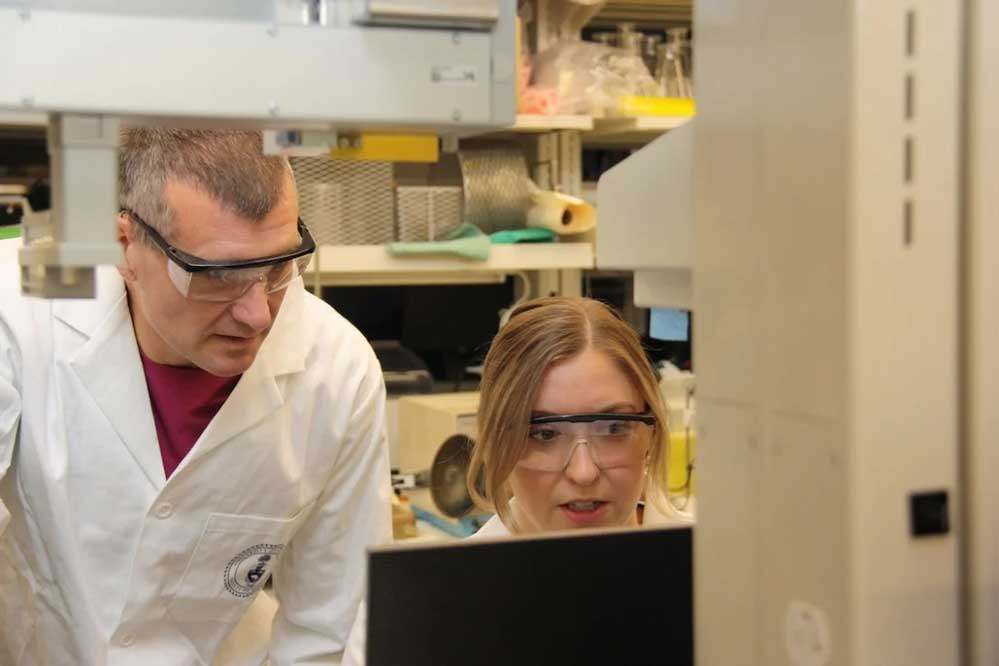Researchers at the University of Toronto have found that palmitic acid, one of the most common fats in human milk, meats and dairy products, is made by the liver and sent to the developing brain when it’s low in the diet.


The preclinical findings underscore the importance of palmitic acid for brain health and point to a need for more research on lowering its levels in infant formula – a step some manufacturers have taken recently to reduce costs and limit the harvest of palm trees, a major source of palmitic acid.
“When we changed the levels of palmitic acid in the diets of developing mice, it didn’t do a thing to the brain,” said Richard Bazinet, principal investigator on the study and a professor and acting chair of the department of nutritional sciences in U of T’s Temerty Faculty of Medicine.
“The results were surprising because when you lower a lipid in the diet, it usually becomes lower in the brain. But here the liver was able to up-regulate production to ensure the brain gets enough of it, despite extreme differences in dietary intake.”
The findings were published in the journal Nature Communications.
Palmitic acid is a saturated fat that supports brain health in several ways, across the lifespan. It contributes to the structure and function of myelin sheathing, which insulates neural connections and acts as precursor to molecules that regulate inflammation and promote cell signalling.
Scientists have long known that humans and other mammals can get palmitic acid from food or generate it in a process called de novo lipogenesis, which mainly requires glucose for its synthesis. Much less is known about which source the body relies on relative to diet and at different stages of growth and maturity.
Bazinet said the study findings highlight the importance of palmitic acid for brain health at all stages, but especially during development, when need for the fat appears to be highest.
“It’s interesting that although the brain can make palmitic acid, the liver up-regulated it so much. These systemic redundancies are built in, so the body won’t take a chance on not getting enough,” said Bazinet, who is also a researcher at U of T’s Joannah & Brian Lawson Centre for Child Nutrition.
The results should give pause to manufacturers looking to reduce the amount of palmitic acid in infant formula, said Mackenzie Smith, first author on the study and a doctoral student in the Bazinet lab.
“It’s possible that we can lower levels in formula, which could have a positive ecological impact, but we don’t yet know the potential health effects,” Smith said. “Are there implications for behaviour or development when the liver produces so much? Might there be negative effects for the liver?”
Smith also noted that even in mice that received the lowest amount of palmitic acid through diet, levels of the fat were still higher than those sought by some manufacturers of formula. That discrepancy adds to the rationale for further preclinical studies, as well as research in humans, Smith said.
To uncover the source of palmitic acid in the brains of developing mice, the researchers applied a new carbon isotope technique. Isotopes are different versions of the same chemical element that vary slightly in mass; for their study, the researchers drew on natural differences in carbon isotope ratios in the environment, based on how plants absorb carbon in photosynthesis.
“Most plants use the same path to fix carbon from the atmosphere and have the same carbon ratio, but sugars such as corn and sugar cane – which the liver uses to generate palmitic acid – have a different ratio,” said Smith.
In the brains of mice, a depleted carbon ratio signature indicated a dietary source of palmitic acid, Smith said, whereas an enriched signature suggested de novo lipogenesis.
The researchers were able to track those signatures at many stages throughout mouse development, to determine the liver was the main source of palmitic acid in the developing brain – a finding they corroborated by looking at changes in genetics.
The approach opens new research opportunities. “As opposed to traditional radioactive tracers, which are very expensive, this new technique allows for a cost-effective and long-term study design,” said Smith.
Building on the current study’s findings, researchers in the Bazinet lab are now applying the same technique in tissue from adult human brains. The method could also provide a new way to measure and track the dietary sources of other fats and nutrients, Bazinet said.
“Nutrition researchers often rely on people reporting their food intakes, which can lead to unreliable data,” he added. “Those problems could potentially be flagged with this kind of technology to track the source and amount of added sugars, for example. It could be very fruitful for nutritional science.”
The research was supported by funding from the Natural Sciences and Engineering Research Council of Canada, the Canadian Institutes of Health Research and the Canada Research Chairs Program.







































